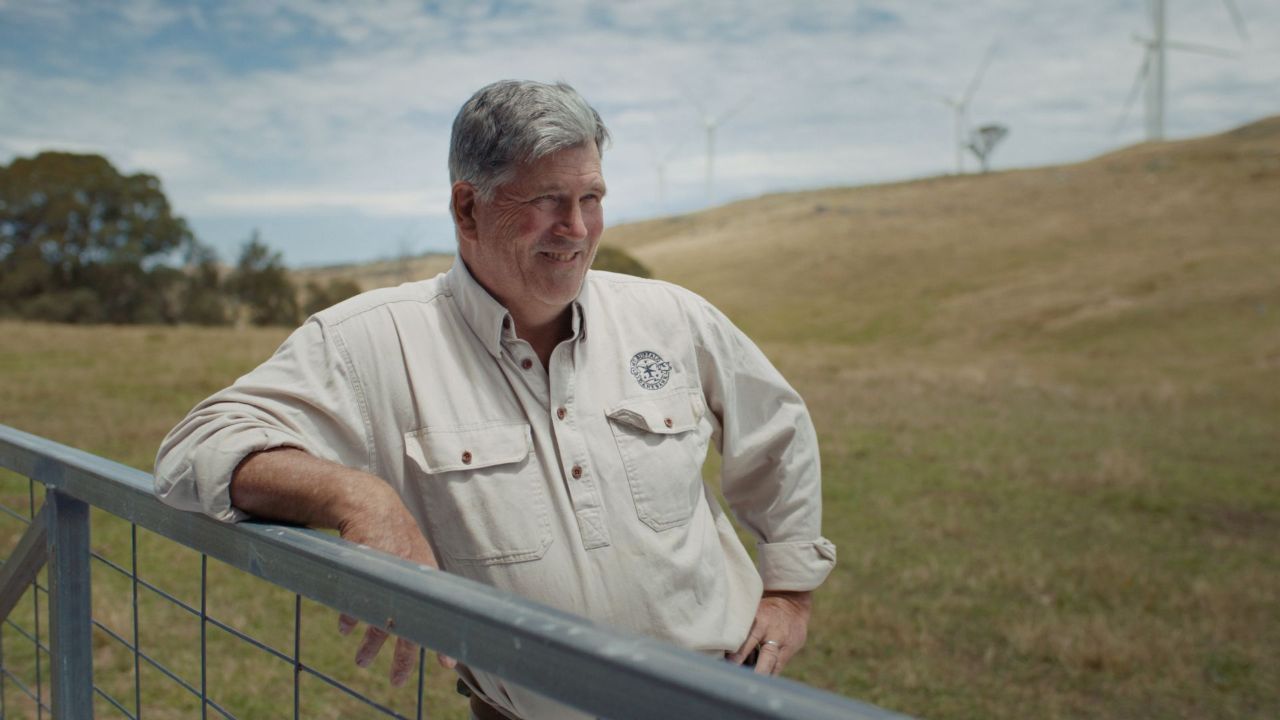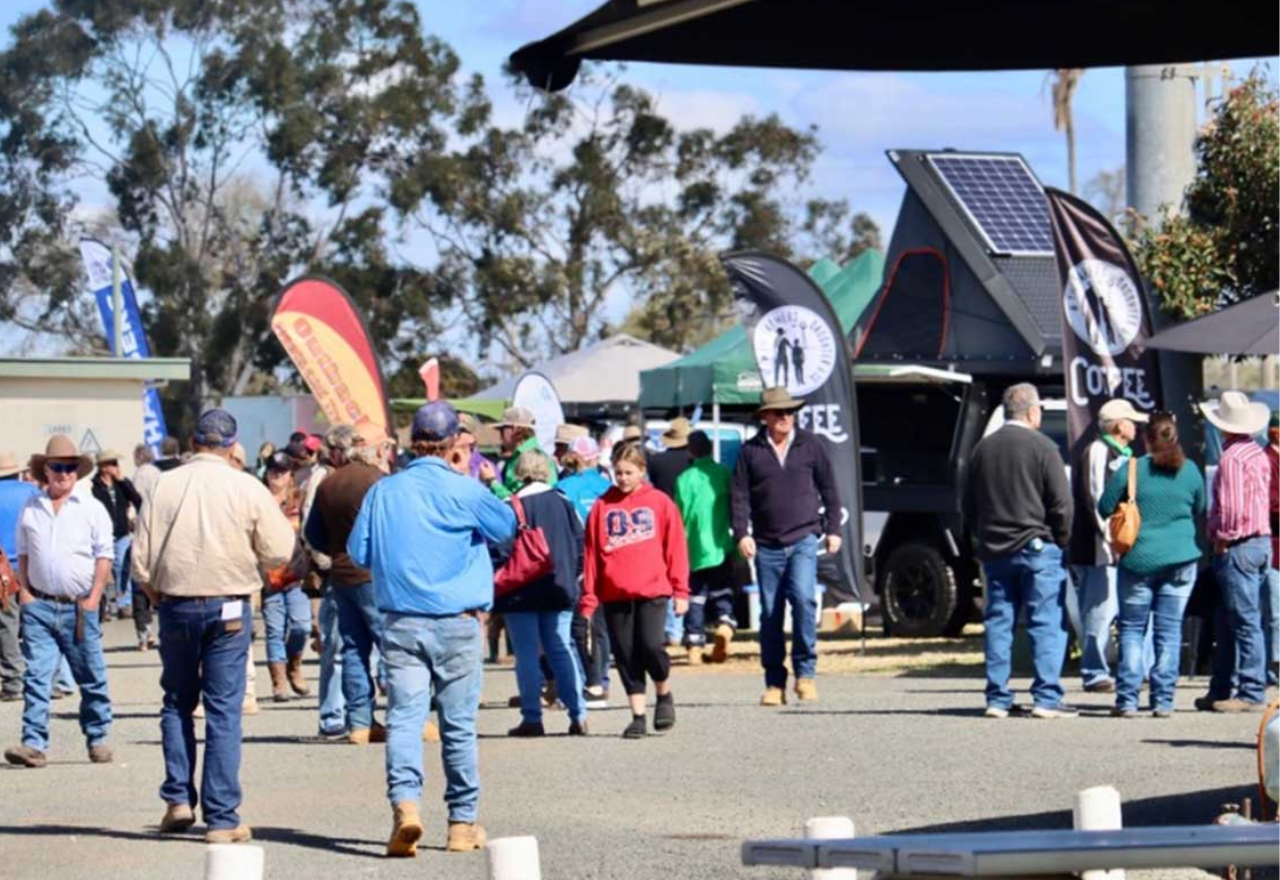Renewables? "Remember - it's your farm!"
Kristin Murdock
06 August 2025, 2:40 AM
 NSW Farmer, Tom Gunthorpe has nine wind turbines on his property and says they are a good source of passive income.
NSW Farmer, Tom Gunthorpe has nine wind turbines on his property and says they are a good source of passive income.While many landholders are branching into the field of renewable energy by hosting wind turbines or solar panels on their farms, the question about what happens to this infrastructure when it reaches the end of its useable life, has long been an issue bubbling beneath the surface.
For that reason, farmers are welcoming a new toolkit launched by Renewable Energy Alliance (RE-Alliance) that provides practical, fact-based guidance on what happens when renewable energy projects reach the end of their lifespan.
Tom Gunthorpe, a mixed farmer from Kangiara in southern NSW, has hosted nine wind turbines on his property for more than a decade and participated in early negotiations with the wind company
about a decommissioning fund.
“I was part of the farmer group that was party to the original negotiations, and we negotiated a decommissioning fund,” Mr Gunthorpe said.
“It’s just peace of mind to eliminate any financial exposure to landholders.
"However, it’s going to be a long time before these things will be decommissioned.
"We’ve got infrastructure here that could last hundreds of years with correct maintenance and an upgrade path.”
Mr Gunthorpe said having renewable energy on his farm had helped improve resilience, particularly during dry times.
“One of our primary benefits is drought, and how that’s done is through passive income,” he said.
“We’ve run the business for 60 years without the turbines, and I can tell you, there’s been some years where we’ve had vegetable sandwiches.
"Now that we’ve got passive income, we’ve de-risked the property.
"We can live a comfortable lifestyle without the worry of when drought comes.”

Tom Gunthorpe combines traditional farming with hosting wind turbines, finding the turbines provide drought proofing income.
The RE-Alliance toolkit, titled Refurbishment, repowering, or retirement: What happens when renewables approach end of life? outlines three clear paths: refurbishment of existing infrastructure, repowering with new technology, or decommissioning and rehabilitation of the site.
RE-Alliance National Director Andrew Bray said the new toolkit arrives at a time when the earliest renewable projects are starting to approach retirement age.
“After nearly 40 years, some of the earliest projects are approaching retirement age, with more set to follow in the coming years,” Mr Bray said.
“This presents an important opportunity for Australia to consider how we manage the next chapter.”
NSW Farmers has also raised concerns about the impact of renewables on agricultural land, appearing before a NSW Government inquiry in May.
“Farmland we need is being taken away without proper engagement or compensation, and then there’s the huge pressure that these renewable projects are putting on local roads and towns during their construction,” NSW Farmers President Xavier Martin said.
“At the moment, it seems any farmers will have to decommission these renewable installations once they reach the end of their lifespan, and anyone neighbouring a project isn’t guaranteed any compensation for the impact it has on their farm and its value."
“Our members are telling us that consultation with farming regions around these projects is still dysfunctional, and this must change if we are to sustain our farming communities.”
Despite these concerns, Mr Gunthorpe believes that with proper negotiation, hosting renewables can bring broader environmental and business benefits.
“One of the other ripple benefits that we were able to leverage from was some of the infrastructure that was set up through the installation process,” he said.
“There was a batch plant where they made all the concrete for the turbines.
"When they finished, they tidied it up for me, they levelled it for me, and we turned it into a drought lot.”
“In drought, we can now take animals off pastures into the lot and let the pastures recover.”
But Mr Gunthorpe also recognises the importance of clear and consistent industry standards as renewables expand.
“There needs to be some sort of framework that the industry follows, but generally speaking, everyone should be working to the same landholder agreements,” he said.
“We’ve received enormous benefit from this, and we’d like to see other people in the same circumstances have the opportunity to take up the same benefits.”
The toolkit is now available via the RE-Alliance website re-alliance.org.au.
For landholders facing new proposals or existing agreements, it offers a starting point for understanding their rights and responsibilities—and negotiating for their future.
“Just remember, it’s your farm,” Mr Gunthorpe said.
“And you negotiate what you feel comfortable with.
"You’ll be surprised how accommodating these companies are."



